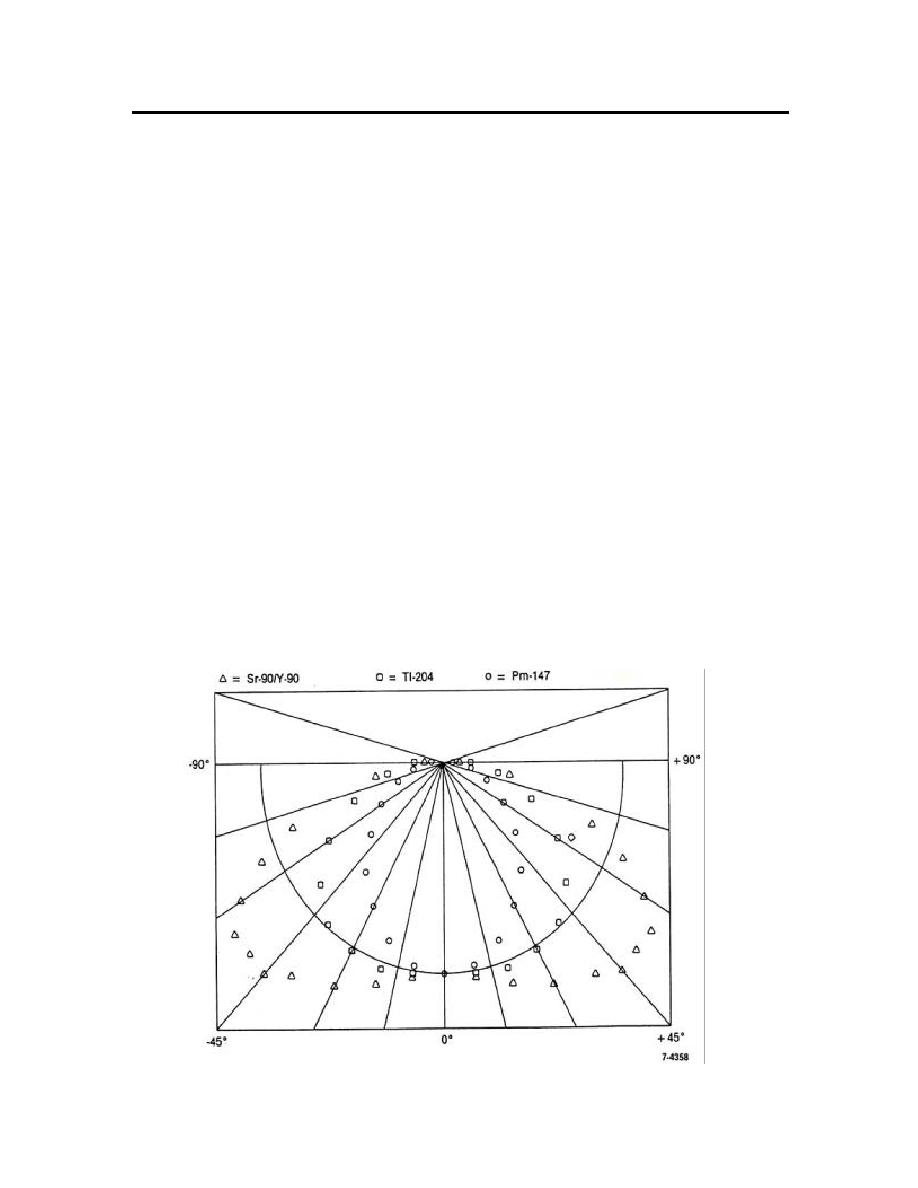 |
|||
|
|
|||
|
|
|||
| ||||||||||
|
|  DOE-STD-1136-2004
Guide of Good Practices for Occupational Radiation Protection in Uranium Facilities
Currently, skin dose measurements are related to the dose at a depth of 7 mg/cm2 in tissue.
Window thicknesses of commonly available survey instruments typically range from on the order of 7
mg/cm2 to several hundred mg/cm2.
Even if the window provides only minimal attenuation, the attenuation of the beta field through the
sensitive volume of large detectors remains a problem. The detector indicates the average dose-rate
throughout the sensitive volume. The "true" dose-rate is that which occurs at the plane of the detector
incident to the radiation source. The instrument will under-respond by the ratio of this average dose-rate to
the incident dose-rate. This sensitive volume under-response is a function of the beta energy distribution
and of the size and shape of the sensitive volume.
6.3.1.2 Angular Response
The construction of most survey instruments (e.g., "cutie pie") leads to a severe angular
dependence when measuring beta radiation fields. This angular dependence results from the attenuation of
the beta field by the walls of the detector as the window is moved away from the source.
Figure 6-6 demonstrates the response of a tissue equivalent response (a 5 mg/cm2 detector under a
5 mg/cm2 window and mounted in a TE phantom) to off-axis (non- incident) 90Sr/90Y betas (energies similar
to those from uranium). Skin tissue dose response is greater to off-axis betas; survey instruments, which
effectively shield these high angle particles, will under-respond compared to skin tissue.
Figure 6-6. Measured Angular Response of the INEL TE Survey Meter to Parallel Beams of Beta
Particles From Three Standard Beta Sources
6-13
|
|
Privacy Statement - Press Release - Copyright Information. - Contact Us |